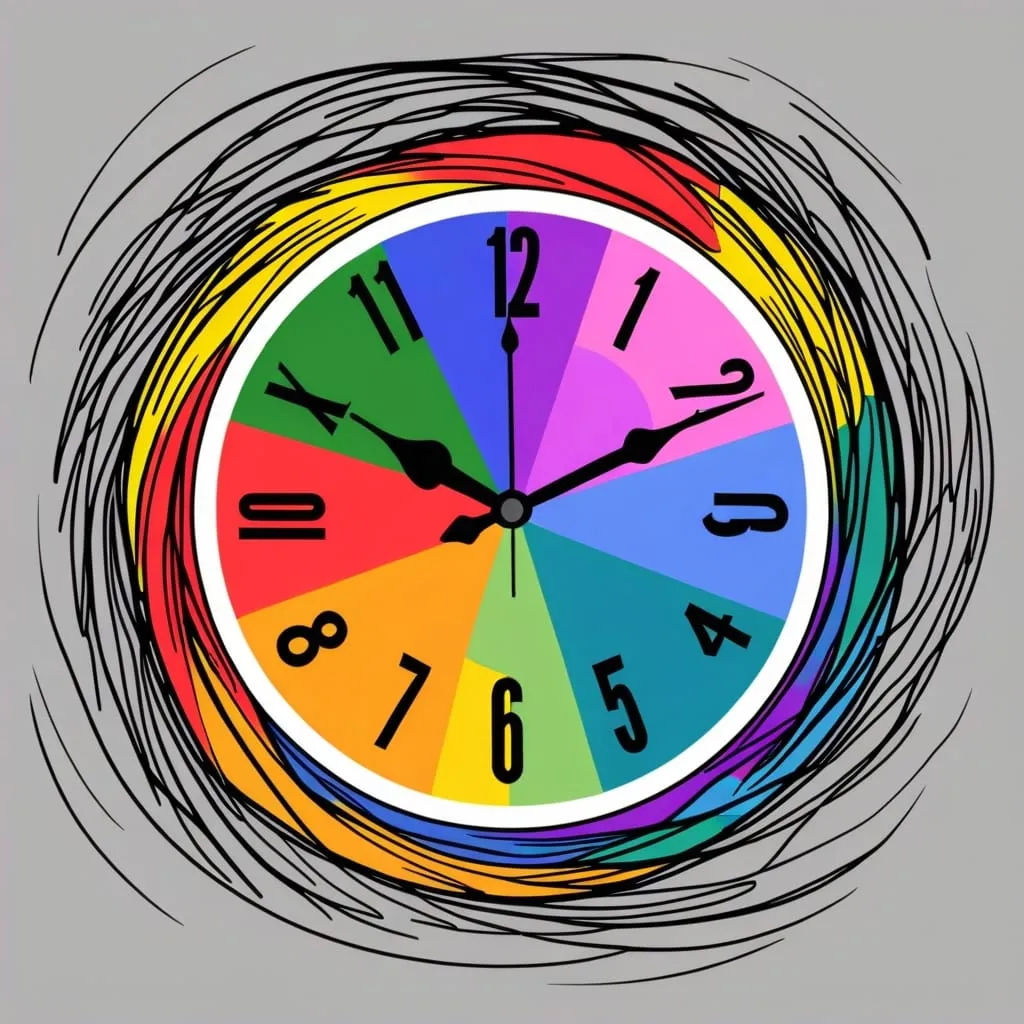Mastering Your Productivity: The Science of Timing
Ever feel like you're fighting an uphill battle with your to-do list? You're not alone. The secret to crushing your tasks might be simpler than you think - it's all about timing.
Let's dive into the fascinating world of productivity cycles and how you can harness them to supercharge your efficiency. Trust me, by the end of this, you'll be itching to revamp your daily routine.
The Morning Glory: Your Golden Hours
For most of us, mornings are when we're firing on all cylinders. There's something magical about those first few hours after waking up. Your mind is fresh, your energy is high, and the world hasn't had a chance to throw any curveballs your way yet.
Imagine this: It's 5:30 AM, and you're up with the birds. You've had a solid night's sleep, and you're ready to seize the day. Within 30 minutes, you're fueling up with a nutritious breakfast. By 7:30 AM, you've squeezed in a quick workout or a brisk walk, and you're ready to tackle your most important tasks.
This is your peak time. Your brain is alert, your focus is razor-sharp, and complex problems seem to solve themselves. It's the perfect moment to dive into those critical emails or chip away at that challenging project you've been putting off.
The Mid-Morning Magic
Hold onto your hats, because around 10 AM, many people hit their productivity sweet spot. Some studies even pinpoint it to exactly 10:26 AM. Wild, right?
During this time, your brain is like a finely-tuned sports car - it's running at peak performance. This is when you want to dive into tasks that require serious brainpower. Strategic planning, problem-solving, or any task that needs intense concentration - this is your moment to shine.
If you're crunching numbers or analyzing market trends, this is your golden hour. Your mind is sharp as a tack, and distractions seem to fade away. It's almost like you've got productivity superpowers.
The Afternoon Slump: Don't Fight It, Work With It
Ah, the dreaded afternoon slump. We've all been there. You're about 7 hours into your day, and suddenly it feels like someone's replaced your brain with cotton wool. Your energy levels take a nosedive, and focusing becomes a Herculean task.
But here's the thing - this slump is totally normal. Instead of fighting it, why not work with it? This is the perfect time for those less demanding tasks. Answering routine emails, filling out reports, or attending meetings that don't require much brainpower - these are your afternoon slump buddies.
And don't forget to take breaks! A short walk or a quick snack can work wonders. If you're feeling like a zombie at 2:55 PM, step away from your desk for a few minutes. Trust me, your future self will thank you.
The Late Afternoon Comeback
Just when you thought productivity was done for the day, surprise! Many people experience a rebound in the late afternoon. This is when your creative juices start flowing again, making it the perfect time for brainstorming or collaborative work.
Your mood is on the up and up, and while you might not be as sharp as you were in the morning, you're more open to new ideas. It's like your brain has switched from analytical mode to creative mode.
This is a great time for team meetings or bouncing ideas off colleagues. Who knows? Your next brilliant idea might come during this late afternoon surge.
Night Owls: When the Sun Goes Down, Productivity Goes Up
Now, let's talk about the night owls. If you're someone who feels more alive when the sun goes down, you're not alone. Some people find their productivity sweet spot between 8 PM and 2 AM.
During these quiet hours, when the rest of the world is winding down, night owls are just getting started. The lack of distractions can lead to deep focus and significant progress on complex tasks.
Just remember, whether you're a night owl or an early bird, getting enough sleep is crucial. You can't burn the candle at both ends and expect to stay productive in the long run.
Personalizing Your Productivity Schedule
Here's the thing - there's no one-size-fits-all approach to productivity. We're all wired differently, and what works for your coworker might not work for you. The key is to find your own rhythm.
Start by paying attention to your energy levels throughout the day. When do you feel most alert and focused? That's your peak time. When do you feel like you're wading through molasses? That's your trough.
Once you've identified these periods, start scheduling your tasks accordingly. Use your peak hours for your most demanding work, and save the easier stuff for your low-energy periods.
And remember, flexibility is key. Some days you might be on fire, while others you might struggle to string two thoughts together. That's okay. Listen to your body and adjust as needed.
Practical Tips to Boost Your Productivity
Now that we've covered the science, let's talk about some practical ways to maximize your productivity:
- Kick-start your day right: A healthy breakfast and some light exercise can set you up for success.
- Prioritize like a pro: Use your peak hours for your most critical tasks. Don't waste them on busy work.
- Break it up: Short breaks can help you recharge and maintain focus throughout the day.
- Stay fueled: Keep healthy snacks and water nearby to avoid energy crashes.
- Create a distraction-free zone: During your peak hours, turn off notifications and find a quiet space to work.
Real-Life Productivity in Action
Let's put this into practice with a real-world example. Imagine you're a financial advisor. Here's how you might structure your day:
6:00 AM: Rise and shine. Fuel up with breakfast and a quick walk. 7:00 AM: Tackle important emails and urgent messages. 8:00 AM: Commute to work (or to your home office). 9:00 AM: Dive into market analysis and investment strategies (your peak time). 12:00 PM: Lunch break. Step away from work to recharge. 1:00 PM: Handle administrative tasks or attend meetings (your low-energy period). 3:00 PM: Brainstorm new financial strategies with your team (creative rebound time). 5:00 PM: Head home and unwind. 6:30 PM: Relax and enjoy your personal time.
But what if you're a night owl? Your schedule might look more like this:
7:00 AM: Wake up and have breakfast. 8:00 AM: Handle emails and messages. 9:00 AM: Attend meetings or work on routine tasks. 12:00 PM: Lunch break. 1:00 PM: Continue with less demanding tasks. 4:00 PM: Take a break to recharge. 6:00 PM: Start focusing on critical tasks that need deep concentration. 10:00 PM: Continue working on complex projects. 2:00 AM: Wind down and prepare for bed.
The key is to find what works for you. Don't be afraid to experiment and adjust until you find your perfect productivity rhythm.
Wrapping It Up
At the end of the day (or night), productivity is all about working smarter, not harder. By understanding your body's natural rhythm and planning your day accordingly, you can accomplish more without burning yourself out.
Remember, it's not about squeezing every last drop of productivity out of every minute. It's about finding a sustainable rhythm that allows you to do your best work while still enjoying life.
So, take some time to tune into your body's natural cycles. Experiment with different schedules. Be patient with yourself as you figure out what works best for you. Before you know it, you'll be riding the waves of productivity like a pro, accomplishing more than you ever thought possible.
Now, go forth and conquer your to-do list!






